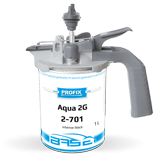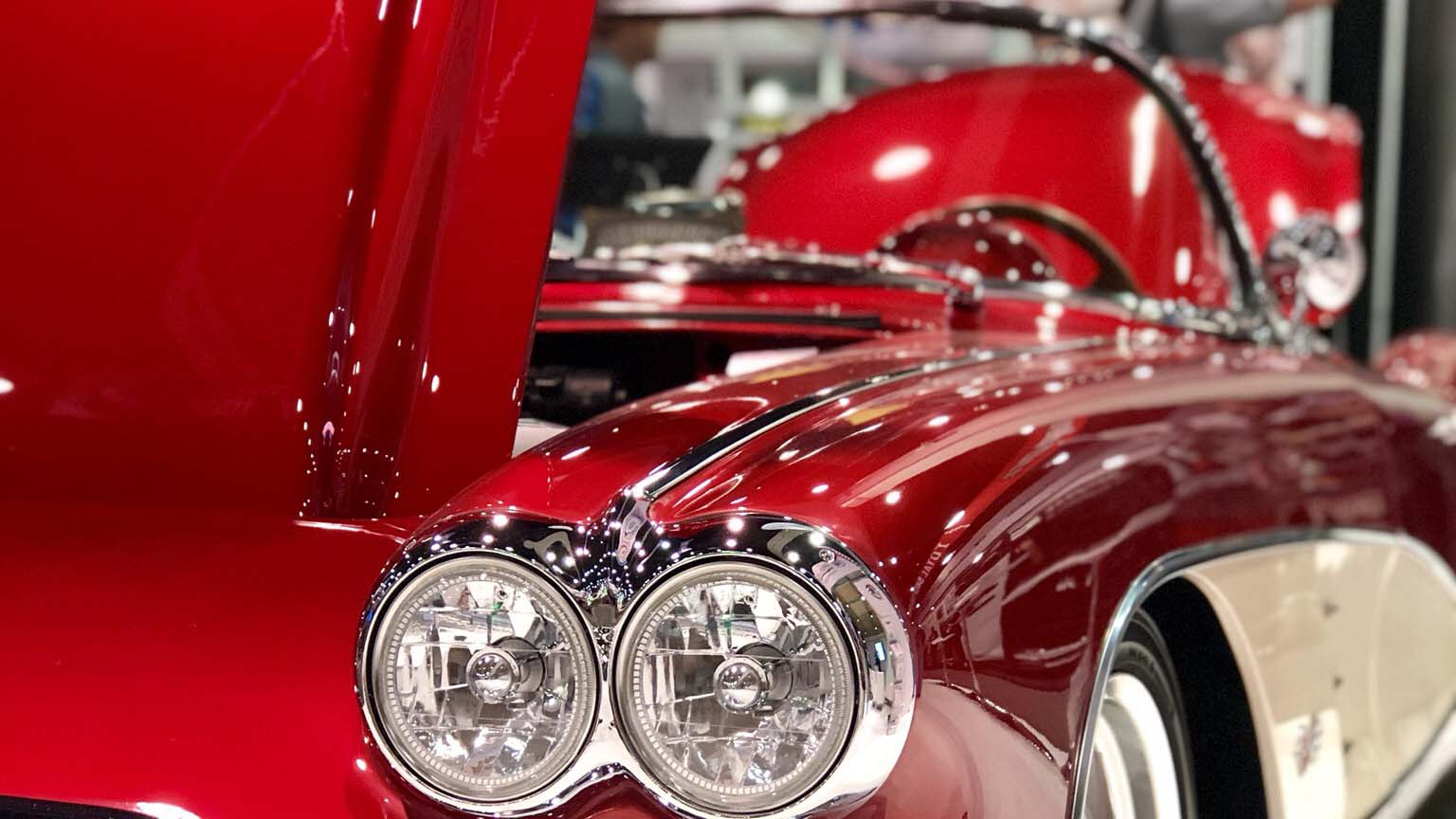Recently added
Related products
Waterbase coat system Aqua 2G 1K
Most read
Why use the water-soluble lacquers, when the conventional ones are available?
Springtime in the industry
Springtime in the industry
The days are getting longer and warmer. Spring is starting. This season is hotly anticipated in the auto paint industry, because together with rising temperatures the work becomes easier. Good weather conditions mean no stand-stills at work caused by low temperatures. It becomes much easier, faster, and cheaper to heat a painting room up to the necessary minimum.
At what temperature is the winter season officially over?
When applying many auto paint products, a minimum of 15ºC must be rigorously respected. Paints can be stored at lower temperatures, but in this case also the lower limit must not be exceeded. Failure to do so can lead to the loss of characteristic features of the product. This is exceptionally important in the case of water-based paints.
The oft-repeated claim that paintwork should be done in summer results mainly from the common conviction that paints applied at low temperatures do not create a hard and durable surface. If we stick to the standards recommended by the manufacturer for proper application, we can avoid the appearance of painting flaws regardless of the season.
It is a fact that at low temperatures, the rate of evaporation is considerably lower, which directly impacts drying time. If the temperature in the painting room is substantially reduced, the coat is not able to achieve the required hardness, and as a result the freshly painted part can easily be damaged during reinstallation. In such unfavorable weather conditions, “fast” thinners and hardeners intended for evaporation at low temperatures can be helpful. These cause paint materials, that is primers, basecoats, and topcoats, to evaporate more quickly, at a rate comparable to summer time. These products, although they make work easier, also entail certain risks. Used improperly, they can be the source of many painting flaws such as gassing, problems with adhesion, the “orange peel” effect, and so on. For most products, both an upper and a lower temperature limit is provided, with the lowest temperature typically being around 5ºC. “Fast” thinners and hardeners can be used at temperatures between roughly 5-18ºC. If the guidelines are followed, they can significantly speed up preparation work.
In many manufacturers’ technologies, thinners are meant for universal use, to be applied to many types of base and top coat. However, the required time intervals between coats for evaporation must be respected before a clearcoat is applied. This is especially true when temperatures in the garage or painting booth are low.
When the thinner is completely mixed into the base coat, it is easy to misjudge viscosity. This often leads to uneven application of the color to the surface. Flaws are most often visible when effects pigments or metallic paints are used.
Metallic paints are made of flakes of metal which when applied too thickly are not able to “flow out” perfectly over the surface, leading to the appearance of dark “shadowy” spots. Unfortunately, in this situation it is necessary to repaint the surface. Additionally, if we apply the clearcoat too quickly, the thinner may remain in the base coat, „trapped” by the clearcoat. This can be compared to closing the base under plastic film. The thinner must escape somehow, leading directly to gassing on the surface of the clearcoat, as well as to reduced adhesion.
Can fast additives be used at any time?
When painting a base coat, the amount of thinner can reduced, thus shortening the drying time. When we use a clearcoat, a similar thing may be done, but the reduction in drying time will be considerably less. Thus, we recommend using a “fast thinner”. When painting with two-component products, analogous to the case of thinner, we can use a “fast’ hardener.
We often make our work easier by using various paint additives, known as accelerators, which speed up the drying process. Such products are added to a previously prepared paint and hardener mixture. In no case should the amounts of product recommended by the manufacturer be exceeded. Most often, adding an accelerator to a mixture in proportions of more than 5% not only causes loss of shine, but also reduces the final resistance and hardness of the paint.
It is not recommended to mix these various additives, that is fast thinners, hardeners, and accelerators. This is certain to result in painting error. Excessively fast formation of chemical binds results in loss of surface durability, color, and adhesion. Experiments with different configurations of products often end up with repainting. When using “fast” additives, attention should be paid not only to the lower limit for ambient temperature, but also to the upper limit. For example, if we paint a base at a temperature of 23ºC and use fast thinners, in the best case scenario we should be prepared for a change in color.
Speeding up drying using IR
Good drying effects can be achieved by using infrared radiation, not only in winter conditions. But beware of applying spackling compound to cold metal. The element which is being repaired should first be warmed up, otherwise corrosion sites may appear on the metal surface. Remember also not to use too much hardener (more than the amount recommended by the manufacturer), as this may cause discoloration of surface layers, or a delayed effect.
Heat guns are also not recommended for drying spackling compound. When there is a thick layer of compound, only the surface layer is dried, thus making it impossible for the whole coating to dry uniformly.
Evaporation of the base layer can be speeded up by using IR radiation, provided that the previously applied layers have been dried in the same way.When working with IR radiation, it is important to remember that plastic elements, such as bumpers, may distort their shapes under the influence of high temperatures. Finally, when using IR, remember to dry all layers with the same method.
A clearcoat with a well-chosen thinner creates a decorative and protective coat over the basecoat. It is like a magnifying glass which highlights all the flaws of the surface. So, the way in which this is applied becomes terribly important. An effect which is used can completely change the way a given surface color is perceived. The thickness of the clearcoat is also important; this “magnifying glass” can reflect light in different ways and thus change the color that we see.
Summing up, it is a good idea to have a look at the warehouse and make sure that products which are essential in the winter season but whose use in the spring could create many easily-avoided problems are not left over. We should also check the storage and working temperature.










